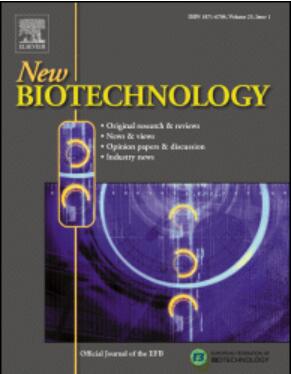Establishing a cutting-edge protoplast technology platform for applying new genomic techniques in Cichorium spp
IF 4.9
2区 生物学
Q1 BIOCHEMICAL RESEARCH METHODS
引用次数: 0
Abstract
Genome editing technologies, especially those based on the CRISPR/Cas9 system, have revolutionized crop breeding by enabling precise genetic modifications. Specifically, delivering preassembled ribonucleoprotein (RNP) complexes—consisting of the Cas9 endonuclease coupled to specific single guide RNAs (sgRNAs)—into protoplasts offers an effective DNA-free method that prevents the integration of foreign genetic material. Despite the availability of detailed protocols, establishing a standardized and efficient in vitro regeneration procedure—from protoplast isolation to whole plant regeneration—remains challenging due to significant variability in regeneration efficiency across different varieties and biotypes. Therefore, optimizing each step is essential to maximize the recovery of successful edited plants. In this study, we developed an efficient protocol for regenerating whole plants from protoplasts isolated from 12 representative Italian varieties of chicory and endive. We focused on leaf chicory and endive biotypes with high horticultural value, including Radicchio types, which are important targets for quality improvement. Our optimized platform supports protoplast isolation, PEG-mediated transfection, and plant regeneration, demonstrating promising potential for future genome editing applications. Notably, the high responsiveness of protoplasts to PEG-mediated transfection suggests that coupling this method with our regeneration procedure could facilitate the use of advanced biotechnological strategies. The combination of high transient transformation efficiency, versatile encapsulation techniques, and successful plant regeneration establishes chicory and endive as promising candidates for DNA-free genome editing via protoplasts, providing a technically precise approach with reduced environmental and economic impacts compared to conventional breeding methods.
建立原生质体技术平台,应用新的基因组技术于菊苣属植物。
基因组编辑技术,特别是基于CRISPR/Cas9系统的技术,通过实现精确的基因修饰,彻底改变了作物育种。具体来说,将预组装的核糖核蛋白(RNP)复合物(由Cas9内切酶偶联到特定的单导rna (sgRNAs)组成)递送到原生质体中提供了一种有效的无dna方法,可以防止外源遗传物质的整合。尽管已有详细的规程,但由于不同品种和生物型的再生效率存在显著差异,因此建立标准化和高效的体外再生程序(从原生质体分离到整株再生)仍然具有挑战性。因此,优化每一个步骤是必不可少的,以最大限度地恢复成功编辑的植物。在这项研究中,我们开发了一种高效的方案,从12个意大利菊苣和菊苣的代表性品种中分离原生质体再生整个植株。我们重点研究了具有较高园艺价值的菊苣和菊苣生物型,包括菊苣生物型,这些生物型是品质改良的重要目标。我们优化的平台支持原生质体分离、peg介导的转染和植物再生,显示出未来基因组编辑应用的巨大潜力。值得注意的是,原生质体对peg介导转染的高响应性表明,将这种方法与我们的再生过程结合起来,可以促进先进生物技术策略的使用。高瞬时转化效率、通用封装技术和成功的植物再生相结合,使菊苣和菊苣成为原生质体无dna基因组编辑的有希望的候选者,与传统育种方法相比,提供了一种技术精确的方法,减少了环境和经济影响。
本文章由计算机程序翻译,如有差异,请以英文原文为准。
求助全文
约1分钟内获得全文
求助全文
来源期刊

New biotechnology
生物-生化研究方法
CiteScore
11.40
自引率
1.90%
发文量
77
审稿时长
1 months
期刊介绍:
New Biotechnology is the official journal of the European Federation of Biotechnology (EFB) and is published bimonthly. It covers both the science of biotechnology and its surrounding political, business and financial milieu. The journal publishes peer-reviewed basic research papers, authoritative reviews, feature articles and opinions in all areas of biotechnology. It reflects the full diversity of current biotechnology science, particularly those advances in research and practice that open opportunities for exploitation of knowledge, commercially or otherwise, together with news, discussion and comment on broader issues of general interest and concern. The outlook is fully international.
The scope of the journal includes the research, industrial and commercial aspects of biotechnology, in areas such as: Healthcare and Pharmaceuticals; Food and Agriculture; Biofuels; Genetic Engineering and Molecular Biology; Genomics and Synthetic Biology; Nanotechnology; Environment and Biodiversity; Biocatalysis; Bioremediation; Process engineering.
 求助内容:
求助内容: 应助结果提醒方式:
应助结果提醒方式:


